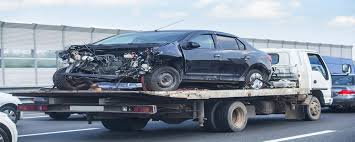Car pulling is a common issue faced by drivers, often resulting in an uncomfortable and unsafe driving experience. When a car pulls to one side, it can be difficult to control, leading to increased tire wear, higher fuel consumption, and potential safety hazards. In this article, we will explore what car pulling is, the potential causes behind it, the consequences it has on vehicle performance, and how it can be resolved.
What is Car Pulling?
Car pulling refers to the phenomenon where a vehicle drifts or veers to one side while driving, even if the steering wheel is held straight. This issue can occur in any type of vehicle, whether it's a sedan, SUV, or truck, and may be particularly noticeable when driving on a flat, straight road. The vehicle may pull to the left or right, making it difficult for the driver to maintain proper control.
Common Causes of Car Pulling
Several factors can contribute to a car pulling to one side. Here are the most common causes:
1. Misaligned Wheels (Wheel Alignment Issues)
One of the leading causes of car pulling is improper wheel alignment. If the wheels are not aligned correctly, the car may tend to pull in one direction. Misalignment can result from hitting curbs, potholes, or simply from normal wear and tear over time. When the wheels are not aligned, they create uneven tire wear and cause handling problems, leading the vehicle to pull to one side.
2. Uneven Tire Pressure
Tires with inconsistent air pressure can also cause pulling. If one tire has lower pressure than the others, it creates an imbalance that can cause the car to pull toward the side with the lower tire pressure. Regularly checking and maintaining proper tire pressure is essential for both safety and vehicle performance.
3. Worn Out or Damaged Suspension Components
A vehicle's suspension system, including shocks, struts, and control arms, plays a crucial role in maintaining the car’s stability and ensuring smooth handling. If any suspension components are worn out or damaged, they can affect the alignment and cause the vehicle to pull. A compromised suspension can also lead to uneven tire wear, exacerbating the issue of car pulling.
4. Brake Issues
In some cases, pulling can be caused by problems with the brake system. A sticking caliper or an issue with the brake pads on one side of the vehicle can cause one wheel to slow down more than the other, leading to the car veering in one direction. This can be particularly noticeable when braking, but it may also affect the vehicle while driving at higher speeds.
5. Faulty Steering Mechanisms
Issues with the steering system can also lead to car pulling. A malfunctioning power steering pump, worn-out steering rack, or other steering-related components may cause the vehicle to pull in one direction, making it difficult for the driver to maintain proper control. If you feel that the steering is unusually loose or stiff, this could be a sign of an underlying problem.
Consequences of Car Pulling
Car pulling not only makes driving uncomfortable but also poses potential safety risks. Here are some consequences of ignoring the issue:
1. Increased Tire Wear
If your car consistently pulls to one side, it will cause uneven tire wear, leading to the need for more frequent tire replacements. Tires that are worn unevenly can affect the vehicle’s grip on the road, especially in wet or icy conditions, and may contribute to accidents.
2. Decreased Fuel Efficiency
When a car pulls to one side, the driver may have to apply more force to keep the vehicle on track, which can cause the engine to work harder. This additional strain can lead to a decrease in fuel efficiency, causing the car to consume more fuel than necessary.
3. Strain on the Steering System
Constantly fighting against a pulling car places unnecessary strain on the steering system. Over time, this could lead to damage to steering components, resulting in more expensive repairs.
4. Safety Hazards
Car pulling can impair the driver's ability to steer properly, increasing the likelihood of accident. If left unresolved, the issue could lead to loss of control, especially during emergency maneuvers, sharp turns, or inclement weather conditions.
How to Resolve Car Pulling Issues
If you notice your car pulling to one side, here are the steps you can take to resolve the issue:
1. Get a Wheel Alignment
A professional mechanic can check and adjust the alignment of your car's wheels. Proper alignment ensures that all wheels point in the same direction, reduce tire wear and improve the vehicle's handling.
2. Check Tire Pressure
Regularly check your tire pressure and ensure all tires are inflated to the manufacturer's recommended levels. You can easily check tire pressure using a gauge and adjust it as needed.
3. Inspect Suspension and Steering Components
If your car pulls despite having properly aligned wheels and tires, it may be worth having the suspension and steering system inspected for any signs of damage or wear. Replacing faulty components can help restore proper handling.
4. Address Brake Issues
If you suspect brake-related issues are contributing to the pulling, get your brakes checked immediately. A sticking caliper or uneven brake pads can cause significant safety concerns and should be addressed promptly.
Conclusion
Car pulling is an issue that should not be ignored, as it can affect both the comfort and safety of your driving experience. By identifying the root cause of the problem and taking appropriate action, you can restore your vehicle's proper handling and ensure a safer, smoother ride. Regular maintenance, including tire checks, wheel alignments, and suspension inspections, can help prevent car pulling and improve overall vehicle performance.




